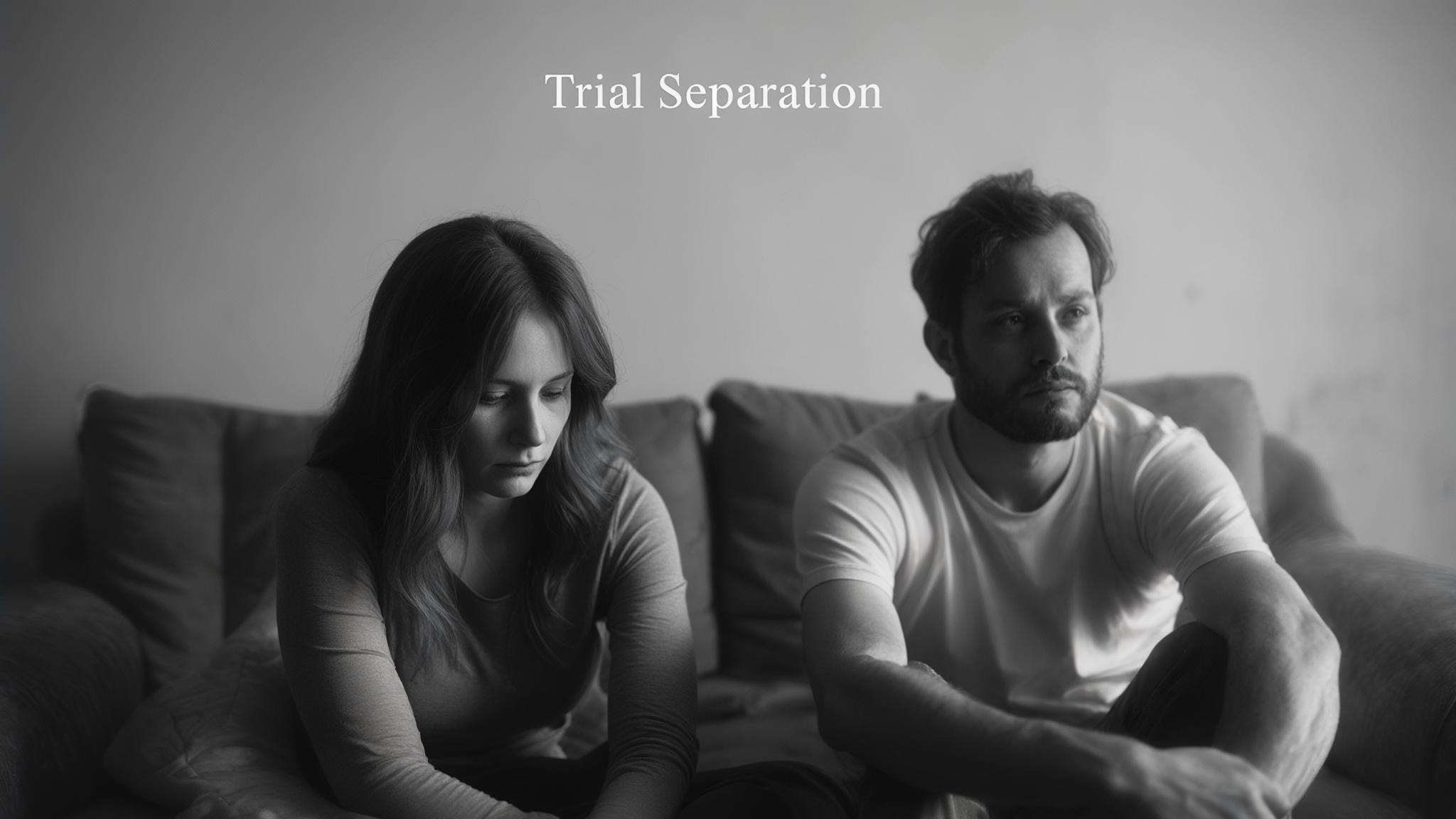Let’s get real — relationships are hard work. Sometimes, even the most loving couples hit a wall and wonder if a little space might help. That’s where a trial separation comes in. If you’re thinking about taking a break, or you’re already in the thick of it, you’re not alone. We’re here to walk you through what a trial separation really means, how it works, and how you can use this time to grow — together or apart.
What Is a Trial Separation?
A trial separation (sometimes called a therapeutic separation or controlled separation) is when partners decide to live apart for a set period, giving each other space to reflect on the relationship. Unlike a legal separation, there’s no court paperwork or official asset-splitting — just an agreement between you and your partner.
Some couples even try a trial separation in the same house — think separate bedrooms, different routines, and clear boundaries, all under one roof. This can be less disruptive for kids and finances, but it takes serious communication and respect.
Why Do Couples Try a Trial Separation?
Let’s be honest: most couples don’t jump to separation lightly. Sometimes, it’s about hitting pause before making a big decision. Other times, it’s a way to cool off, get perspective, or work on personal growth. There’s even a growing trend of therapeutic separation, where couples work with a counselor to structure their time apart for healing and clarity.
The Stats — And Why They Matter
- 80–87% of trial separations end in divorce. That’s a tough number, but it’s real. Only about 10–13% of separated couples get back together, and just a third of those reconciliations last for the long haul.
- Median time from separation to divorce: 7–19 months.
- After one year apart, the chance of divorce jumps to 59% for men and 44% for women.
- About 40% of couples try to reunite at least once during separation, but the longer you’re apart, the harder it gets.
Source: Marriage.com, Verywell Mind
How Does Separation Work? (And How to Do It Right)
A trial separation isn’t just about moving out or sleeping on the couch. It’s about setting clear intentions and boundaries. Here’s what the pros recommend:
1. Set the Rules for Separation
- Duration: Decide how long the separation will last (usually 3–6 months).
- Living Arrangements: Will you live apart, or try a trial separation in the same house?
- Money: Who pays for what? Be clear about bills, rent, and shared expenses.
- Kids: Set a parenting schedule and keep routines stable.
- Dating: Are you exclusive, or is it okay to see other people?
- Communication: How often will you check in? What’s off-limits?
A temporary separation agreement (even if it’s just written between you two) can help keep things clear and avoid misunderstandings.
2. Get Support
A therapeutic separation works best with a couples therapist or counselor. They’ll help you set goals, talk through tough stuff, and keep things on track. Without support, it’s easy for emotional distance to grow — and for the separation to drag on with no real direction.
3. Keep It Temporary
Letting a separation go on forever is a recipe for drifting apart. Set a date to check in and decide what’s next — whether that’s working things out, trying again, or moving on.
Common Mistakes (And How to Avoid Them)
- No clear rules: Most separations fail because couples don’t talk about boundaries or expectations.
- Using separation as a threat: This just breeds resentment.
- Dragging it out: The longer you’re apart, the less likely you’ll reconcile.
- Skipping professional help: Even the best intentions can get lost without guidance.
“Most couples go through trial separations without discussing the rules, which is why up to 87% end up filing for divorce.” — Marriage.com
Trial Separation in the Same House: Does It Work?
Living under one roof while separated is tricky, but it’s possible. You’ll need:
- Separate spaces (bedrooms, bathrooms if possible)
- Clear routines (who’s home when, who cooks, etc.)
- Respect for boundaries (no surprise “let’s talk” moments)
- Open communication (especially if you have kids)
This approach can be less disruptive for children and finances, but it only works if both partners are committed to the rules.
Legal Stuff: What You Need to Know
- Trial separation is informal — no court, no lawyers, no legal status.
- Legal separation involves court orders, asset division, and sometimes custody arrangements.
- In most places, you don’t need a reason (“no-fault divorce” states) to separate or divorce.
- A temporary separation agreement can help, but it’s not legally binding unless filed in court.
For more on the legal side, check out FindLaw’s guide.
Using Vuln Love to Navigate Your Trial Separation
Here’s the thing: separation doesn’t have to mean the end. It can be a chance to reset, reflect, and reconnect. That’s where we come in.
At Vuln Love, we believe every couple deserves a shot at a deeper, more meaningful connection — whether you’re together, apart, or somewhere in between. Our app is designed to help you:
- Check in on your relationship health with personal insights
- Learn new skills with short, daily videos
- Practice connection with simple, science-backed activities (talks, hugs, kisses, and more)
- Enjoy weekly date ideas and experiences, even if you’re living separately
- Get support from a personal tutor — no advice, just real encouragement
Our 12-week challenge costs less than a single therapy session ($120), making it an affordable, supportive way to work on your relationship — no matter where you are on your journey.
Ready to start? Download Vuln Love now.
FAQ: Trial Separation
What is a trial separation? A trial separation is when partners agree to live apart for a set time to reflect on their relationship, without legally divorcing or dividing assets.
How does separation work? It works best when couples set clear rules, communicate openly, and (ideally) work with a therapist or counselor.
What are trial separation rules? Rules cover how long you’ll be apart, living arrangements, finances, parenting, dating, and communication. Writing them down helps.
Can we do a trial separation in the same house? Yes, but it requires strong boundaries, separate spaces, and lots of respect.
What’s a temporary separation agreement? It’s a written document outlining the rules and expectations for your separation. It’s not legally binding unless filed in court.
What’s a therapeutic separation? A therapeutic separation is a trial separation guided by a therapist, with the goal of healing and gaining clarity.
What are the chances of getting back together after a trial separation? About 10–13% of couples reconcile, and only a third of those stay together long-term.
Final Thoughts
A trial separation is a big step, but it doesn’t have to be the end of your story. With clear rules, open hearts, and the right support, it can be a powerful tool for growth — together or apart. If you’re ready to take the next step, we’re here for you.
Start your journey with Vuln Love today: https://app.vulnme.com/l/landing_header
Further Reading:
- Marriage.com: Trial Separation
- Verywell Mind: Should You Consider a Trial Separation?
- FindLaw: Separation vs. Divorce
- Psychology Today: The Do’s and Don’ts of Trial Separation




